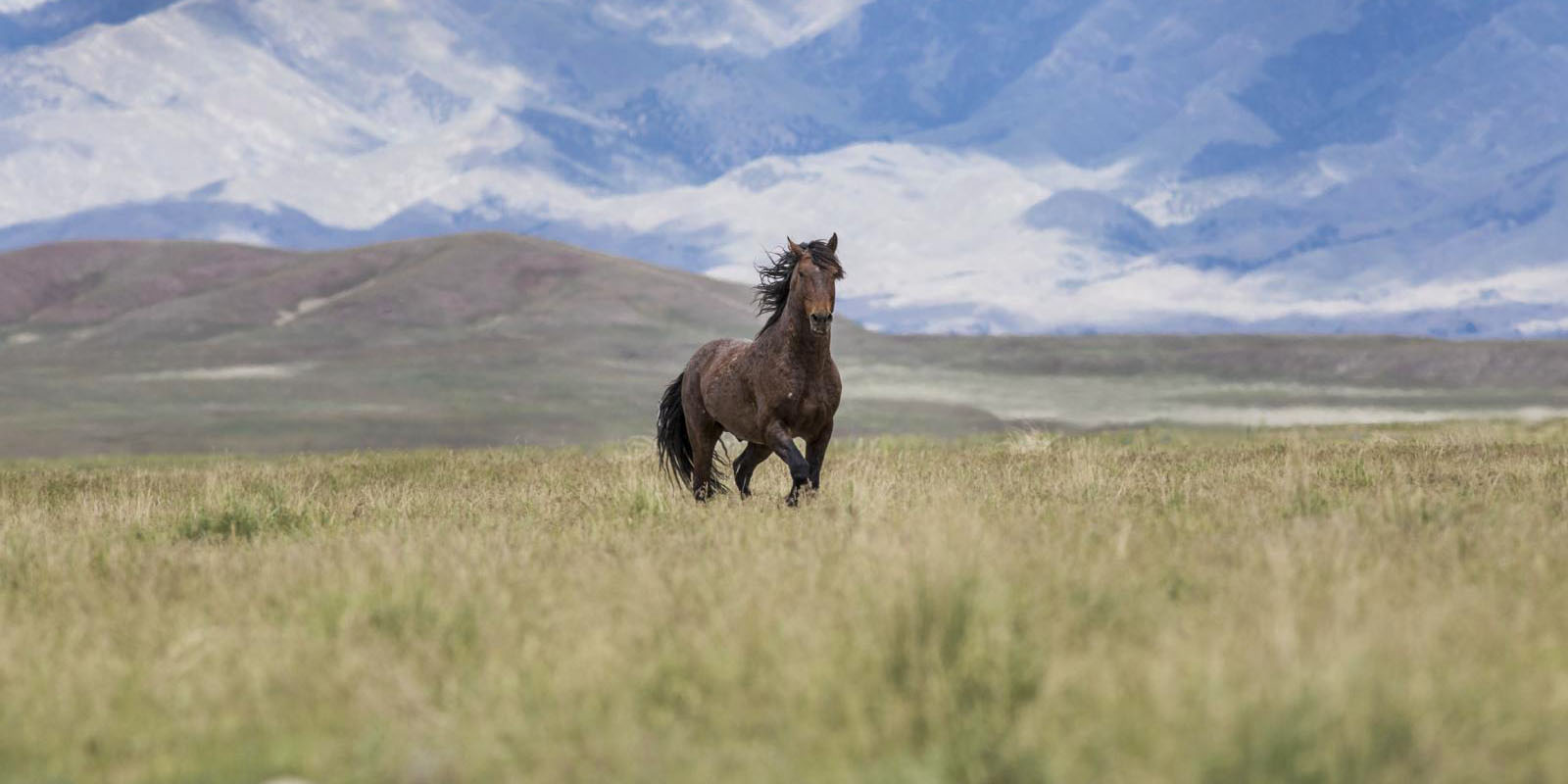In their 2013 study, de Seve and Griffin concluded that the use of PZP combined with select removals could result in significant savings for the BLM’s wild horses and burro program.
Using their hybrid population and economic model, de Seve and Griffin projected costs and outcomes of three BLM management options for a hypothetical HMA with a target population of 874 horses over a 12-year period. They found...
- A “no management” option, meaning no horses would be removed from the range or receive contraception and returned to the range, could lead to a population increase of 874 horses to 6,000 horses in 12 years;
- A “removal-only” option, meaning horses would be removed from the range at 3, 7, and 11 years, could lead to the target population of 874 horses being maintained but COST the BLM over $13 million over 12 years because the Bureau would have to assume the expense of caring for the horses who were removed and placed into holding facilities;
- A “contraception and removal” option, meaning horses would be removed from the range but a high number of mares would be treated with PZP and returned at 3, 7, and 11 years, could lead to the target population of 874 horses being maintained and SAVE the BLM about $8 million over 12 years because the Bureau would NOT have to assume the expense of life-long care of horses who were removed and placed in holding facilities. Compared to the “removal only” option, this option would save $5.9 million.
Given that the “contraception and removal” option could save $8 million for one HMA with 874 horses over 12 years, de Seve and Griffin asserted that implementing this option in all 179 HMAs – home to about 38,000 wild horses in FY2013 – could save the BLM tens of millions of dollars. Even when PZP is not 100% effective, de Seve and Griffin also argued that it would still result in a major reduction in wild horse population and cost savings for the BLM.

Photo of certified darter mixing the PZP vaccine.
When these cost savings are considered in the context of managing horses in the 177 existing Herd Management Areas, the significant cost savings become clear.
The American Wild Horse Campaign implores the BLM to accept the widely established science-based conclusion – that fertility control, and particularly PZP, is the most humane, efficient, and cost-effective alternative to the current inhumane, expensive, and unstainable approach of roundup, removal, and stockpiling these animals in tax-supported BLM holding facilities.
References:
Charles W. de Seve, Ph.D. & Stephanie L. Boyles Griffin (2013). An Economic Model Demonstrating the Long-term Cost Benefits of Incorporating Fertility Control into Wild Horse (Equus Caballus) Management
Programs on Public Lands in the United States. Journal of Zoo and Wildlife Medicine, 44(4s), S34-S37.
United States Department of the Interior, Bureau of Land Management (2016). Wild Horse and Burro Quick Facts. Retrieved from https://www.blm.gov/wo/st/en/prog/whbprogram/history_and_facts/quick_fac...


